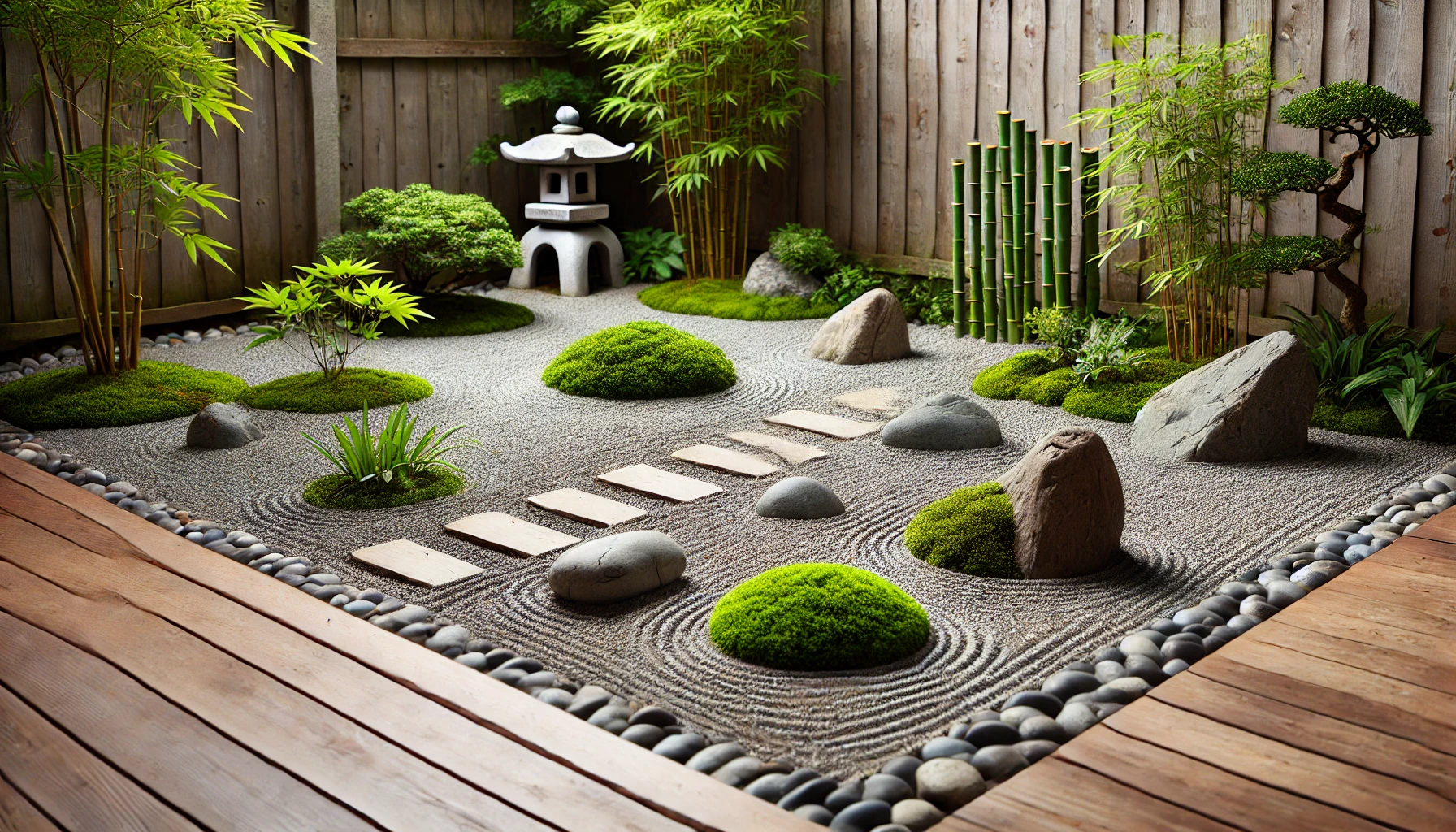A Zen garden, also known as a Japanese rock garden, is a space designed to promote tranquility and mindfulness. With its minimalistic design and focus on natural elements like stones, sand, and plants, a Zen garden provides a perfect retreat for relaxation and meditation. Here’s a step-by-step guide to creating your own Zen garden in your backyard.
Understand the Purpose of a Zen Garden
Zen gardens are more than just decorative spaces—they represent simplicity, balance, and harmony. The core elements (rocks, sand, and plants) symbolize natural landscapes and are often arranged to inspire reflection and calmness.
Benefits of a Zen Garden
- Reduces stress and promotes mindfulness.
- Enhances the aesthetic appeal of your backyard.
- Requires minimal maintenance compared to traditional gardens.
Choose the Right Location
Find a Quiet Space
Select an area in your backyard that is relatively quiet and away from high-traffic zones. A secluded corner works best for a peaceful ambiance.
Consider the Size
Zen gardens can be as small as a 5×5-foot patch or as large as an entire backyard. Choose a size that fits your space and budget.
Assess Sunlight and Drainage
Ensure the area receives adequate sunlight for plants and has proper drainage to prevent water from pooling.
Plan Your Design
Sketch the Layout
Draw a rough plan of your Zen garden, including the placement of rocks, sand, and plants. This will help you visualize the final look and make adjustments before starting.
Elements to Include
- Gravel or Sand: Represents water and provides a base for raking patterns.
- Rocks: Symbolize mountains or islands and add texture to the garden.
- Plants: Add greenery and softness to the design. Bamboo, moss, and small shrubs are ideal choices.
- Decorative Features: Consider adding a stone lantern, small wooden bridge, or water feature for a traditional touch.
Prepare the Area
Clear the Space
Remove any grass, weeds, or debris from the chosen area. Level the ground to create a smooth base for your garden.
Install a Border
Use wooden planks, stones, or metal edging to define the boundaries of your Zen garden. This prevents the sand or gravel from spilling into other areas.
Lay a Weed Barrier
Place a layer of landscaping fabric over the ground to prevent weeds from growing through the sand or gravel.
Add Gravel or Sand
Choose the Right Material
- Gravel: Durable and ideal for creating distinct raking patterns.
- Sand: Softer and more fluid but may need frequent maintenance in windy areas.
Spread Evenly
Pour the sand or gravel over the weed barrier, ensuring an even layer about 2-3 inches thick. Use a rake to level the surface.
Position the Rocks
Select Rocks with Care
Choose rocks of varying sizes, shapes, and textures to create visual interest. Smooth stones and larger boulders work well.
Arrange Thoughtfully
- Group rocks in odd numbers to create natural-looking clusters.
- Place larger rocks as focal points and smaller stones to complement them.
- Tilt rocks slightly to mimic natural formations.
Incorporate Plants
Select Low-Maintenance Plants
- Moss: Adds a lush, green carpet-like texture.
- Bamboo: Provides height and movement.
- Japanese Maple: Offers vibrant color and a traditional touch.
Plant Strategically
Position plants near the edges or around rocks to maintain an open, uncluttered look. Use mulch or small pebbles around the base of plants for a neat appearance.
Create Raking Patterns
Use a Garden Rake
A wide-toothed rake is essential for creating patterns in the sand or gravel.
Experiment with Designs
- Ripples: Mimic water waves around rocks.
- Straight Lines: Represent calmness and order.
- Circular Patterns: Surround larger rocks to highlight them as focal points.
Maintain the Patterns
Rake the surface regularly to refresh the patterns and remove debris.
Add Decorative Features
Stone Lanterns
Traditional Japanese stone lanterns add authenticity and elegance to your Zen garden. Place them near plants or as a focal point.
Water Features
A small fountain or koi pond can introduce soothing sounds and enhance the garden’s tranquility.
Wooden Elements
Consider adding a small bench, wooden bridge, or pergola to complement the natural materials.
Maintain Your Zen Garden
Regular Cleaning
- Remove leaves, twigs, and debris to keep the garden tidy.
- Sweep or rake the sand/gravel weekly to maintain patterns and smooth surfaces.
Prune Plants
- Trim bamboo and shrubs to prevent overgrowth.
- Remove weeds that may sprout around the edges.
Adjust Rocks and Patterns
- Rearrange rocks occasionally to refresh the design.
- Experiment with new raking patterns for variety.
Conclusion: Finding Serenity in Your Backyard
Building a Zen garden in your backyard is a rewarding project that combines creativity and mindfulness. With its simple yet elegant design, a Zen garden transforms any outdoor space into a sanctuary of peace and harmony. By following these steps, you’ll create a beautiful retreat that you can enjoy for years to come.

